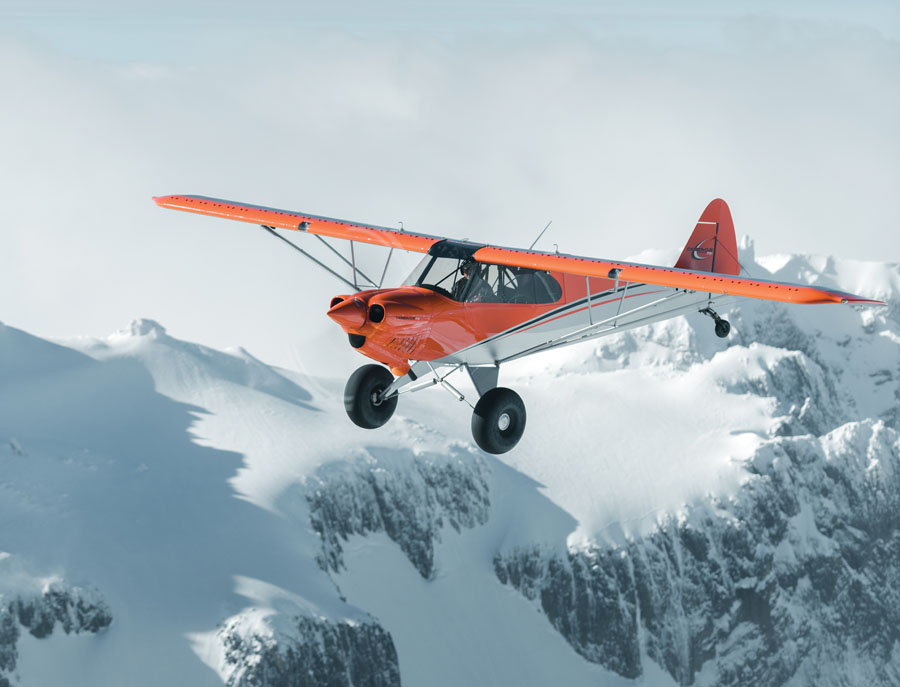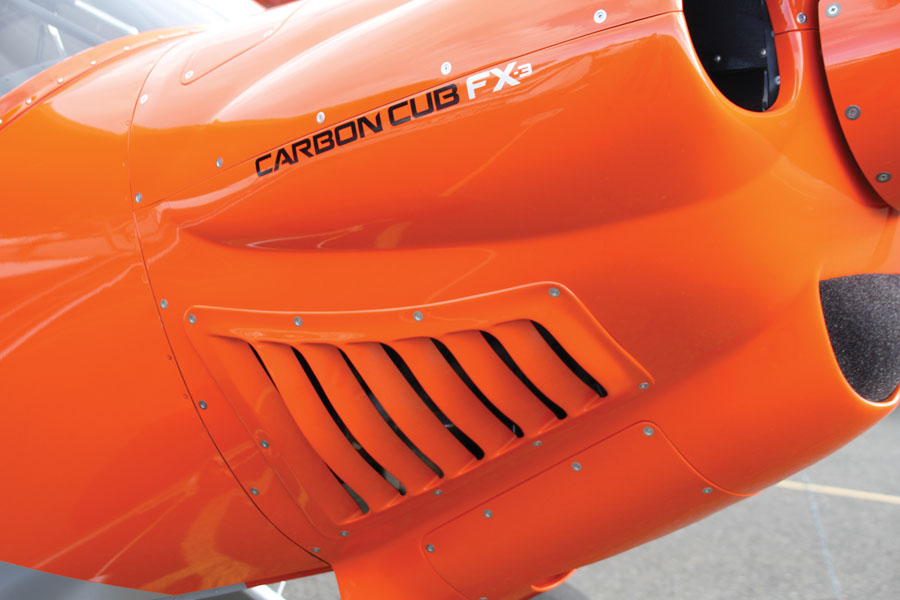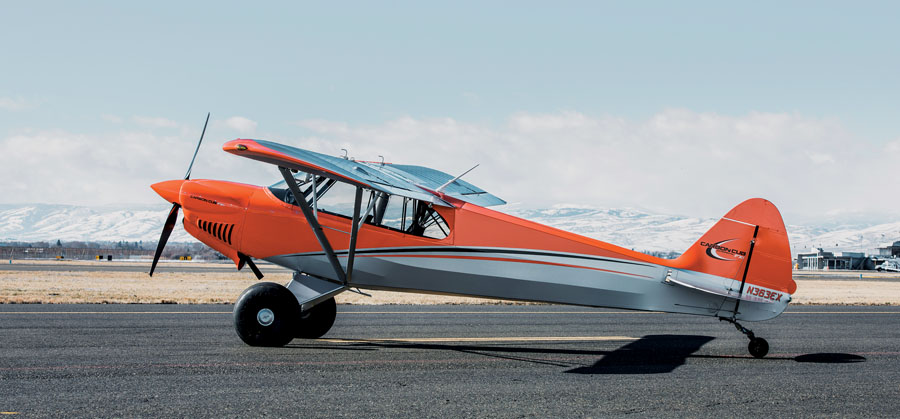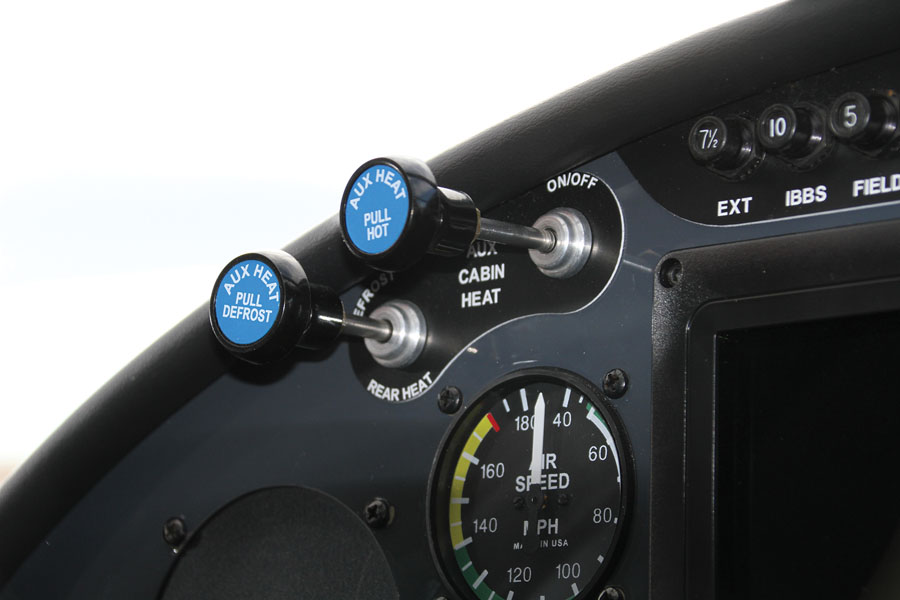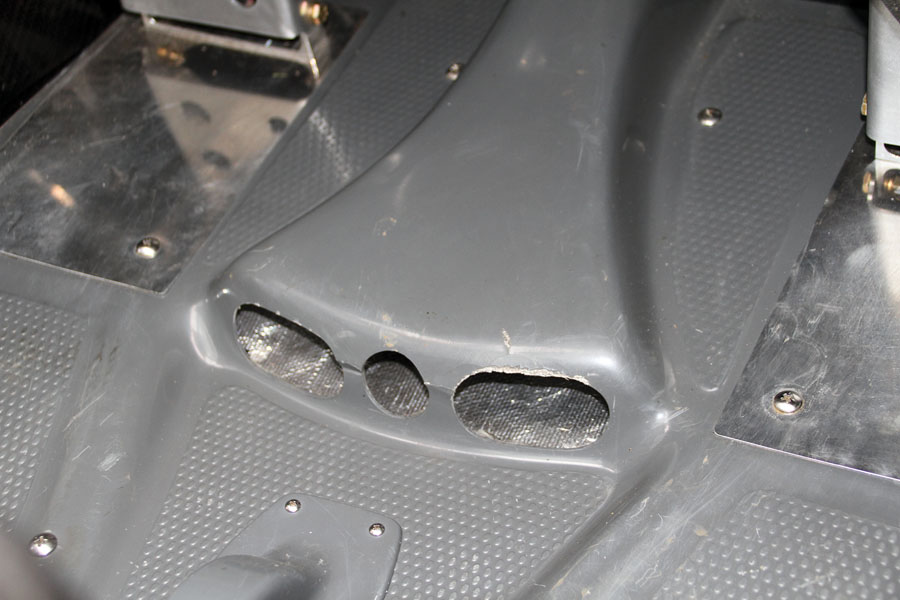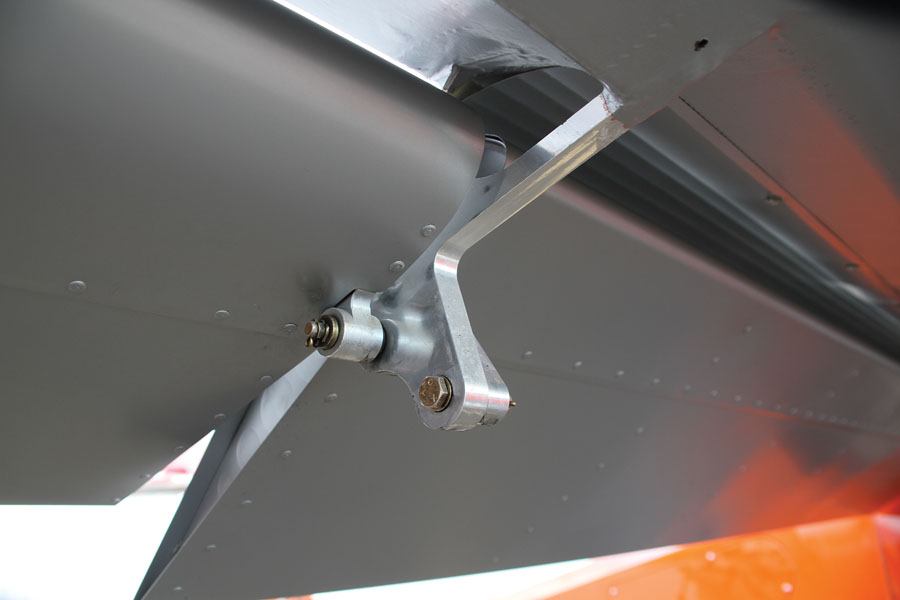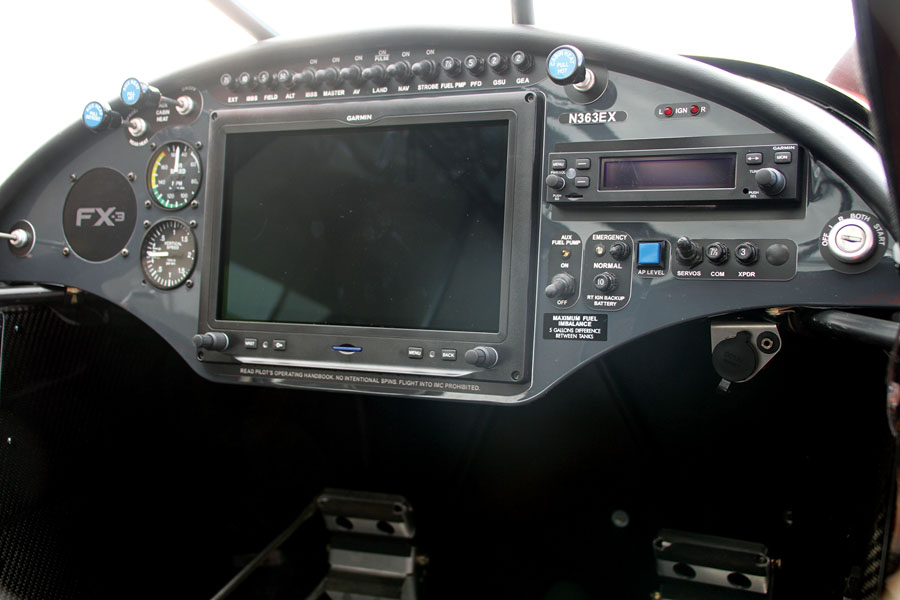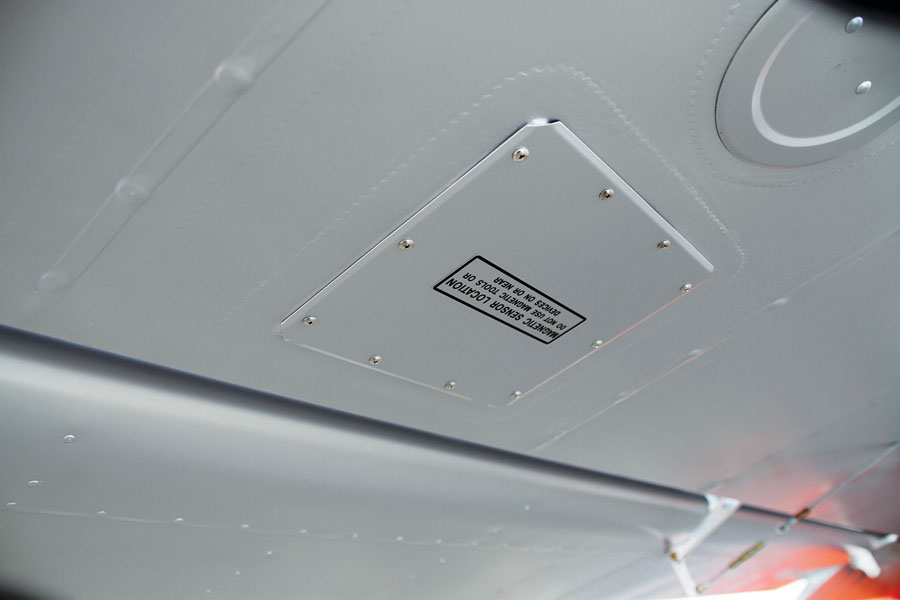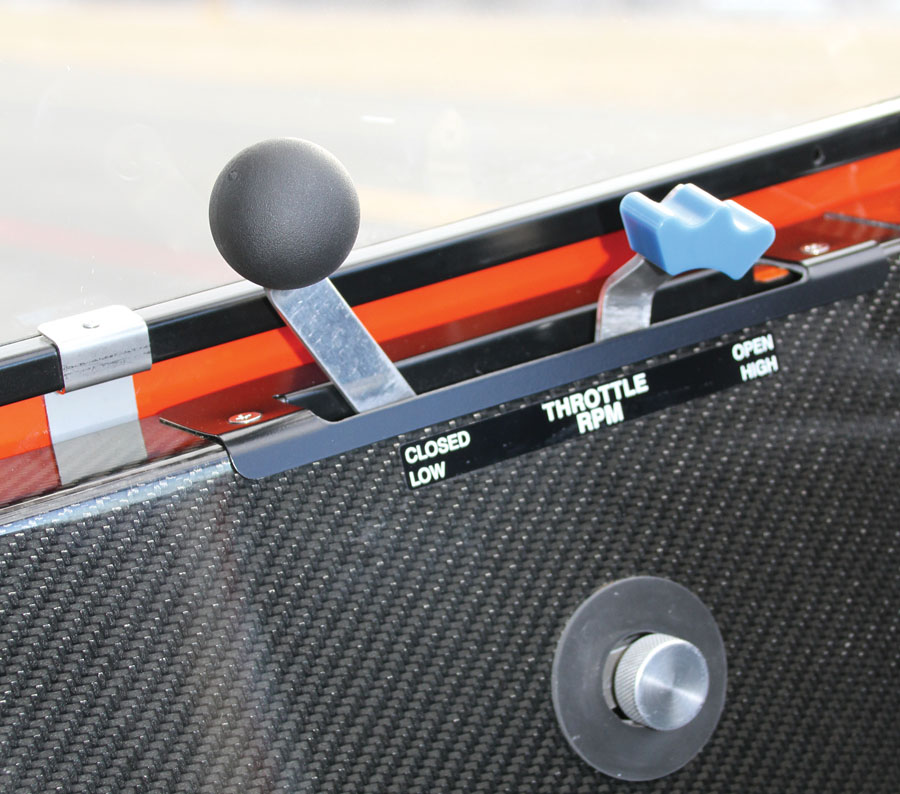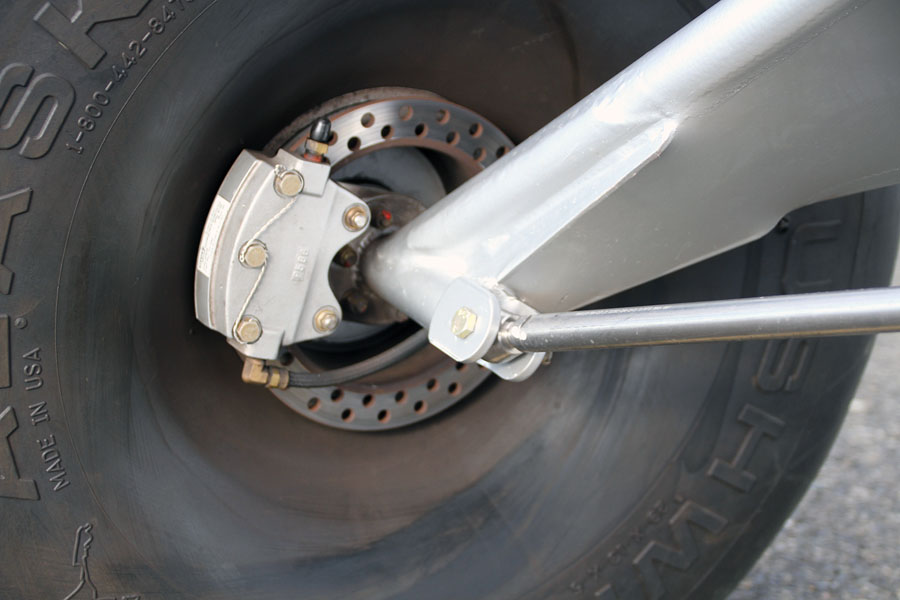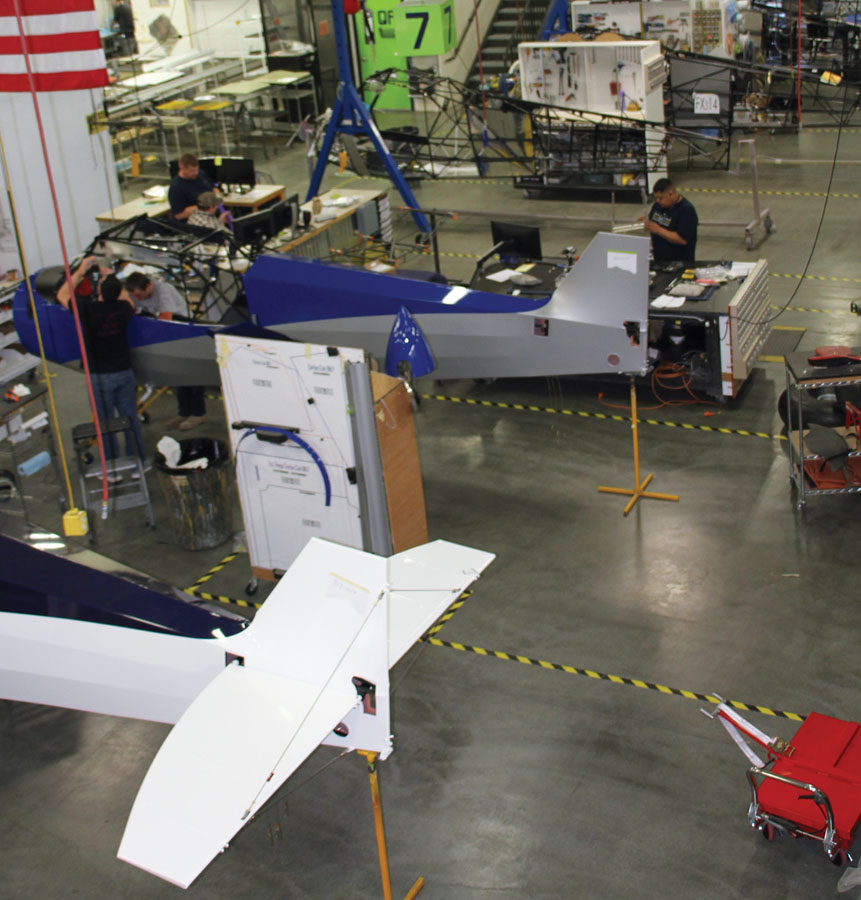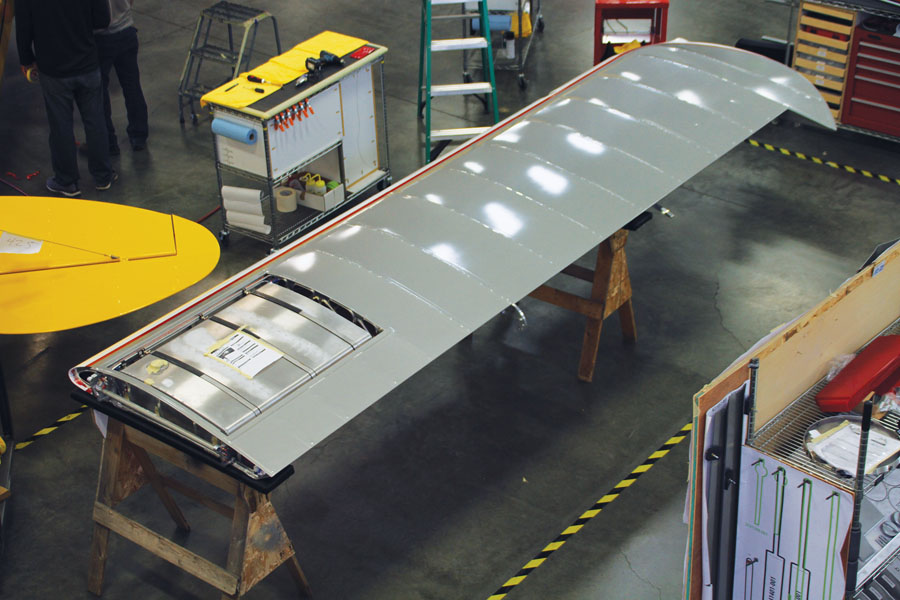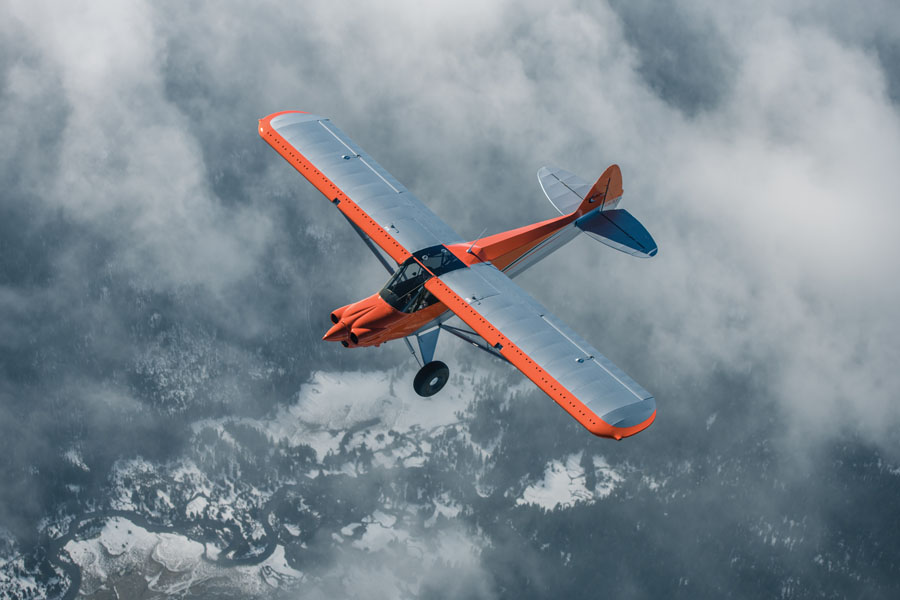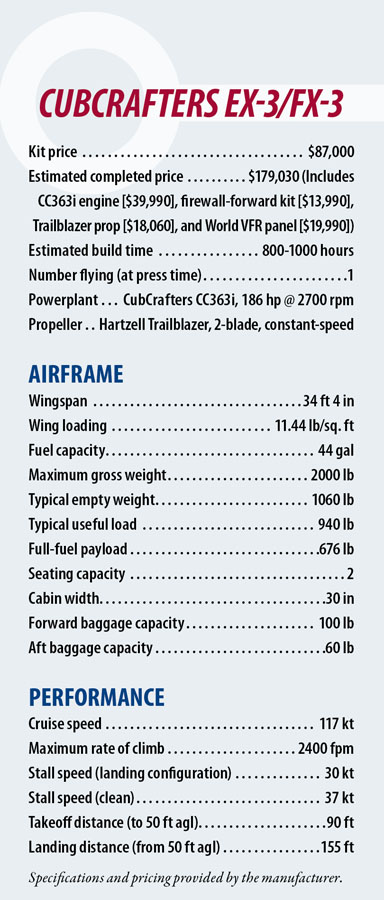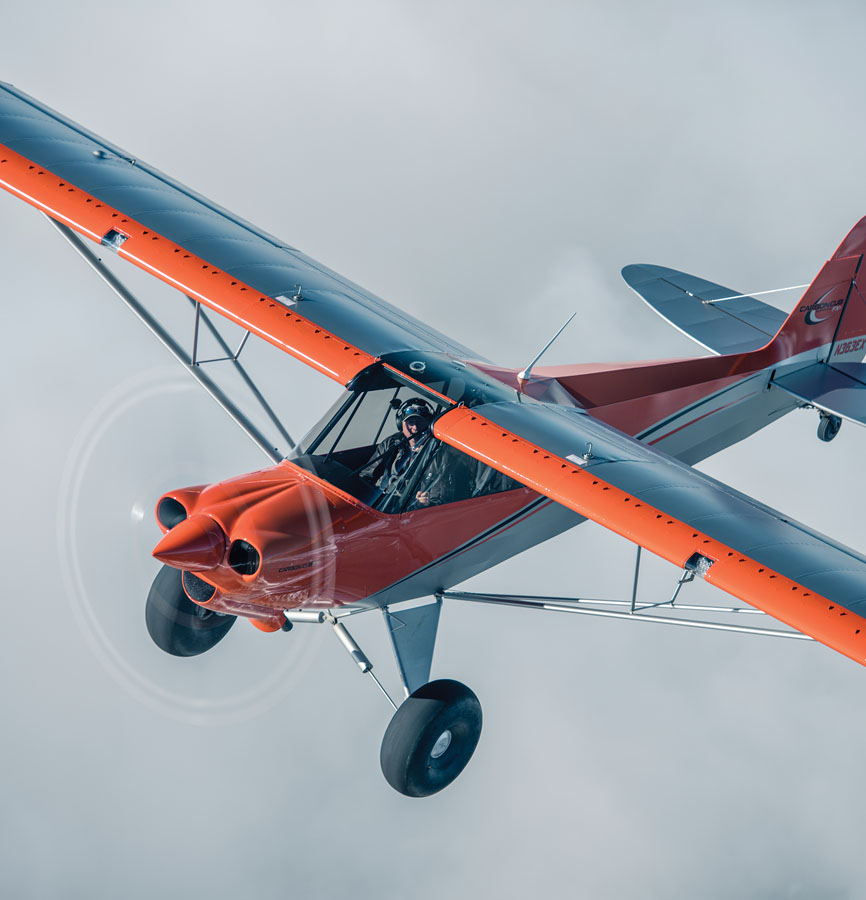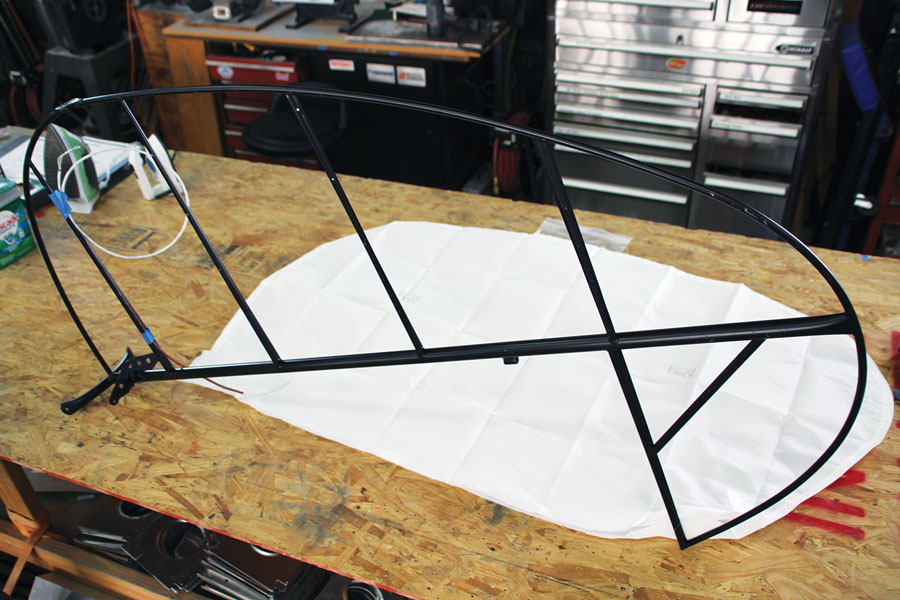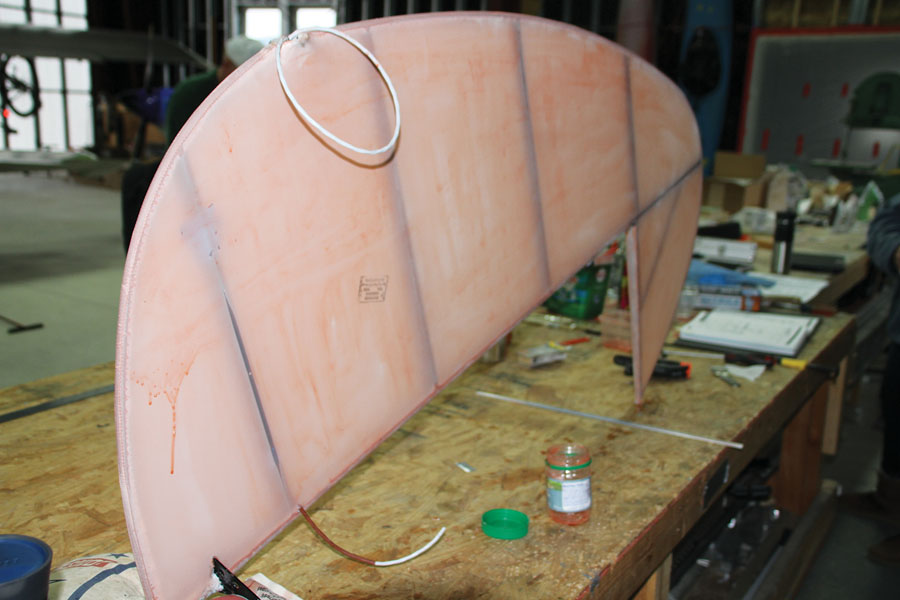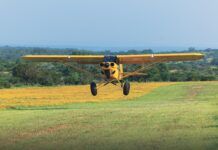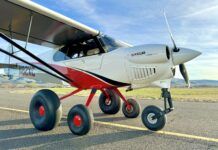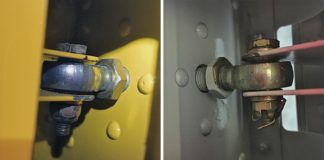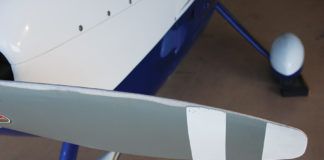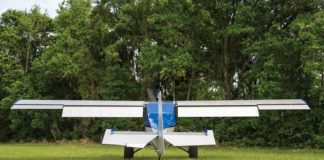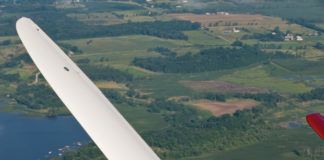When CubCrafters started out many years ago, their intent was to build a better Cub, a daunting challenge when you think about the fact that this ubiquitous airplane is known the world over as both a workhorse and a fun machine to fly. Cubs have explored the far reaches of the globe and brought their pilots back so they can tell the stories—how can they get any better?
The answer is that they can be made lighter to give them better performance, aerodynamic mods can make them handle better, and modern construction techniques can make them easier to build and maintain. The end result is a modernized version of the venerable machine that the public associates universally with “light airplanes.”
Not only did CubCrafters redesign (and redefine) the Cub, they took a look at the business of producing airplanes and turned that on its ear as well. This single company produces Part 23 certified machines, ASTM-certified Special Light Sport aircraft, kits for Experimental Light Sports, and kits for the E/A-B market. And now they are deeply involved in a factory-assist program that is similar—but different—to what other companies have pioneered. They have their fingers in almost every niche of the light-plane market, and their sales reflect that, with delivery slots for finished aircraft pre-sold into 2019.
It’s an exciting time to visit CubCrafters’ facility in Yakima, Washington, and we did so early this year to sample their latest design, available as either a complete kit (the EX-3) delivered to your workshop, or as a factory-assisted build (the FX-3). Either way, the customer is part of the build in varying degrees, and either way, you end up with one great flying machine.
What’s New
The EX/FX is the next evolution of the CubCrafters line, borrowing from all of the previous models, and particularly from lessons learned with the XCub. Powered by CubCrafters’ proprietary CC363i engine and a constant-speed prop, the airplane has tremendous performance due to power, aerodynamics, and light weight.
Let’s start with power. A panel of CubCrafters experts sat down and asked how they could do better than the traditional IO-340 that they have been using on previous versions. They added features they wanted such as tapered-barrel Millennium cylinders, a counterweighted crankshaft to better absorb the power pulses from the 9.0:1 compression, and roller tappets. They decided to use the Silver Hawk EX fuel injection system, but are sticking with the dual Light Speed electronic ignitions they have been using for years. Adding a special cold-air sump fabricated in house and a flow-bench engineered induction system for better breathing gives them 186 hp to deliver to the Hartzell Trailblazer prop—a constant-speed, blended-airfoil scimitar measuring 86 inches in diameter. The front end of this airplane looks and means business.
Covering up all that power is almost a shame, but CubCrafters did it with a composite cowling that minimizes cooling drag while maximizing cooling. And if you are used to the view out the front of a Super Cub, be prepared for a surprise—the tapering cowling provides an excellent view over the nose.
Moving back into the airframe, the EX/FX is now rated for a gross weight of 2000 pounds. CubCrafters president Randy Lervold explained that they have been holding the gross weight at the old standard of 1850 pounds for years because they have managed to build an airplane with an empty weight several hundred pounds lighter than legacy Cubs, making the useful load that much higher. But pilots are pilots (especially bush pilots), and they always want more—so upping the gross weight now gives a significant boost to an already boosted useful load. The structure was there, and where it wasn’t, they beefed it up with little addition of weight. The EX/FX was designed to Part 23 standards, just like the XCub, so there is nothing being overly stressed.
The EX/FX also borrows from the XCub when it comes to flight controls. Pilots liked the longer stick on the XCub, but engineering analysis showed that in order to use the longer stick, other elements of the flight control system needed beefing up because more leverage means more force can be applied by the pilot. We found the stick geometry to be very natural—enough stick length to get our hand above the legs, but not so high that you couldn’t rest your arm on your leg to maintain smooth control. The EX/FX uses cables for aileron control instead of the pushrods of the XCub, but we didn’t find that we could actually tell the difference.
Finally, it might seem to be a trivial improvement to many, but a lot of thought went into the new heater system, and it does make a difference if you fly in cold climates. It’s no secret that most light aircraft have poor cabin heat from a single hole in the firewall and a heater muff around the exhaust pipes. It’s even worse in most tandem aircraft for the rear seat occupant—in short, they probably need to dress warm. But in the EX/FX, extra attention was paid to maximize airflow and heat transfer into the cabin. Heat ducts flow that air to both the front and rear seats (Yes, this Cub has rear-seat heat!), and even to a defroster when needed. The difference is quite noticeable. We flew the airplane on a cold winter day over the Cascade Mountains and stayed toasty warm the entire time. CubCrafters has always been good with cabin amenities, and they kept that reputation going with the EX/FX.
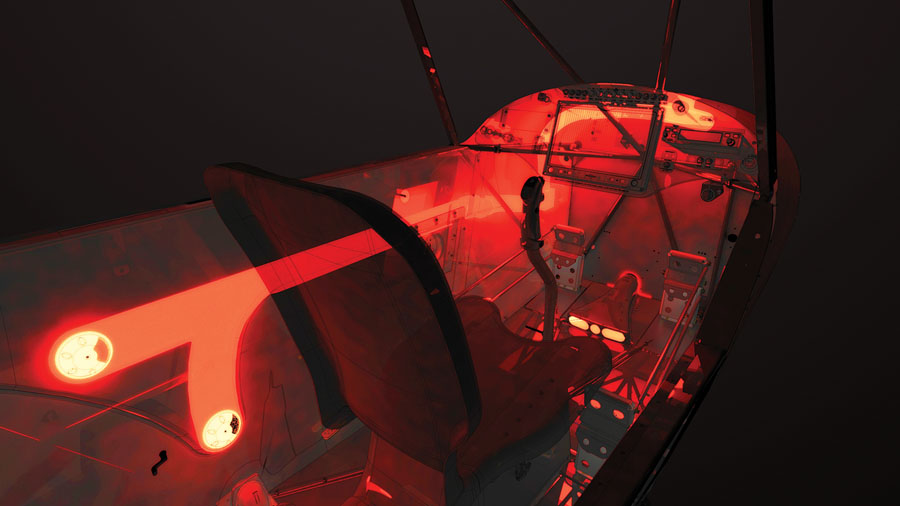
The cabin heat flows from multiple ducts to provide hot air to both pilot and passenger, as well as the windshield defroster.
With the new gross weight of 2000 pounds and an empty weight of 1023, the useful load of 977 pounds is astounding for a Cub. Forty-four gallons of fuel can be absorbed easily and still leaves 713 pounds for pilot, passenger, and cargo. Unless you’re planning on carrying an elk, it’s going to be hard to overload this machine. And with a cruise speed of 135 mph, you can carry that load a reasonable distance without having to plan overnight stops.
Flying the FX-3
We showed up at CubCrafters’ door on a clear winter day in February, and the brand-new factory demonstrator was waiting for us, full of fuel and sniffing the sky as if to say, “Come on—let’s not waste the day!” CubCrafters president, Randy Lervold, gave us the briefing on the upgrades and differences between the -3 and the earlier models, but it was clear he wanted to get in the air as well. So, in short order, we strapped in to the comfortable cockpit and fired up the big fuel-injected CC363i. The fuel tanks in the high wing are gravity feed, so no boost pump was required; we just pushed in the mixture, cracked the throttle, and hit the starter. The electronic ignitions fired right off, and the airplane was ready to go.
The visibility over the nose is about as good as it gets in a Cub. You can easily see to taxi, and even when following closely behind another Cub for a later photo mission, we felt none of the blindness we remember from our old J-3 days. Sitting in the front seat helps. Run-up is quick and straightforward, checking the dual Light Speed ignitions and the big constant-speed Hartzell prop. Then it was on to the runway, pulling one notch of flaps, adding power, lifting the tail—and flying away…all in about the time it took for you to read this sentence.
To say that the initial climb is spectacular is an understatement. The airplane simply levitates away from the earth, and pulling back to make the climb steeper is both comfortable—as it feels very solid—and a little frightening. There is no substitute for power!
The airplane feels stable at low speeds with steep banks, with little nibbling at the stall, as you’d expect with non-STOL-ish airplanes. Later in the flight, we added flaps and went to full throttle, then hauled back to a rocket-like attitude for an approach to a power-on stall that had us almost lying on our backs. This rock-solid feel at low speeds contributes to the fun you’ll have maneuvering around trees on final approach to a gravel bar or short dirt strip. It’s a confidence builder.
As we climbed southward out of Yakima, with a stiff wind blowing out of the north, we crossed the nearby ridgeline that looms in a pilot’s face with no difficulty. As we rolled into some progressively steeper turns, the improved aileron design that appeared on the XCub showed once again how CubCrafters has tailored the design through careful flight testing to make an airplane that is simply delightful. Yes, it’s still a Cub, and it’s not going to do an aileron roll in a couple of seconds like your Pitts. But compared to a genuine original Cub (J-3 or Super, take your pick), the FX-3 is quick and responsive. It enters and exits a roll rate crisply, making quick maneuvers easy to initiate and formation flight fun.

Gap seals improve elevator effectiveness— important for slow flight and short takeoffs and landings.
One of the most noticeable things in turning flight is the low nose. The cowl slopes away from the pilot in a way that will have you climbing in turns if you don’t think about it. In most “Cub-alikes,” you put the cowling close to the horizon in a turn, but in the FX-3, you’ll have to put it significantly below. This means better visibility in turns, as well as in climb. It’s easy to get used to—and enjoy—but it’s something for which you’ll want to adjust.
Stalls were a non-event, power off. There was little break in the clean stall and no tendency to roll off to either side. With flaps extended, the break was positive—about what you’d want for teaching people stalls—with positive roll and yaw control throughout. This is a well-engineered and tailored machine.
After getting the feel of the plane, we headed over to a short grass strip in the farmland south of Yakima for a few landings and takeoffs. One notch on downwind, two notches on base, and an approach speed down between 50 and 60 mph was comfortable and natural. There was plenty of power to adjust approach angle radically if required—and frankly, you could “blow” the tail up or down with the slipstream for an added measure of control. There was plenty of elevator in the flare for a good three-point. Wheel landings were a piece of cake, and the hardest thing is to make yourself stop doing circuits; they are just that much fun!
We practiced Lervold’s recommended short-field takeoff technique a couple of times. Two notches of flaps, a touch of back pressure on the stick, add full power, and release the brakes. You’re flying off in a three-point attitude in a plane length or two (OK, maybe three; we didn’t measure). If we’d had any headwind, we’d have probably hovered off like a helicopter. Power and a great wing, coupled with good controls, make this stuff easy.
A good test of handling qualities for any airplane is formation flying, and on our photo mission, Lervold gave me the airplane to fly solo while he took command of the photo ship (another Carbon Cub, of course). Flying a new ship in formation is always interesting, but I found the airplane to be quick and responsive, and easy to put anywhere I wanted. The constant-speed prop allows for good braking in an overshoot, and there was plenty of rudder to steer the nose in and out. Overall, the airplane was a delight in formation and handled like a much faster and more responsive airplane than any Cub-like plane I have flown.
As we returned to Yakima’s 7000-foot towered runway later in the day, we did a formation landing. As Lervold touched down in a Carbon Cub, and I was approaching the threshold in the FX-3, an Alaskan Airways Dash 8 called for takeoff clearance. The tower asked me to expedite, and though I was already nearly at running speed, I added a little power in the wheel landing. Lervold later commented how nicely I lifted off and flew just inches above the runway to the exit taxiway. Frankly, I didn’t even feel much difference between the high-speed taxi and flying—control was good, even with 15 knots of wind on the nose.
In the Cockpit
CubCrafters Cubs are different than regular Cubs. Not only has the company taken 70 years of experience with the basic platform and improved the machine, they have also spent a great deal of time thinking about the flying experience for the pilot and passenger. Starting with the seats, the front is ground adjustable to allow you to fit your leg length to the rudder pedals. The rear seat sling is much more comfortable than anything you’d find in an original Cub, and the cabin seems spacious. The windows on both sides swing up and have a nicely machined capture latch to hold them there. The door swings down in two pieces on the right side, giving more entry room. Both front and rear seats have full flight controls, including toe brakes.
The instrument panel is dominated by a single large Garmin G3X screen, giving you flight and engine instruments, plus moving map capability. The ADS-B/transponder system is remote mount, with pilot control via the EFIS, and the single GTR 200 com radio is also controllable from the screen. However, we did it from the radio head out of habit. Switches are arrayed across the top of the EFIS for the aircraft electrical system and lighting. The mixture is a push-pull knob on the left side of the panel and is easy to adjust. The left side also has throttle and prop control. Push-pull knobs for the new heat system are on the top of the panel. And, of course, seeing as how this is a CubCrafters airplane, there are cup holders mounted both fore and aft.
The large baggage area is reachable from an outside door on the right side of the aircraft or from the cabin by reaching behind the passenger seat. There is plenty of room back there for camping and exploring gear.
From the Outside
To many people, a Cub is a Cub. But look close at the EX/FX-3, and you’ll find lots of little details you won’t see anywhere else. Aileron and flap hinges are billet-machined aluminum, so you’ll never see the telltale rust stains common on almost every 60-year-old airplane you’ll find. The elevators have gap seals on the top surface of the hinge line, adding to the excellent pitch response you get at low speeds.

Tundra tires are only natural for an airplane designed for the bush—the only choice you have to make is big…or bigger.
A mark of any good bush plane these days are the big Alaskan Bushwheels, and the latest CubCrafters airplane doesn’t disappoint. The big, bubbly tires make touchdowns soft, even on uneven and rocky terrain. Using them often on pavement can be costly, however, as that soft rubber is not happy when chip-sealed asphalt tears away at it. It has been said that every landing on pavement can cost you $10—but the fun of taking them off airport is worth it to most. CubCrafters uses ventilated brake disks to help cool them down after aggressive stops, and we can confirm that you can stop in a remarkably short distance. Ground handling is also excellent, and the pneumatic tailwheel provides good handling.
Taking a look at the cowl, the four-into-one exhaust stack has its own tunnel down the middle of the bottom cowl. Up front, underneath the airplane’s snout, is a new NACA duct feeding two inlets for the improved cabin heat system.
Another obvious improvement up on the nose is the composite Hartzell blended airfoil propeller; it’s an impressive 83-inch scimitar that really grabs the air for good short-field pulling power.
The overall impression is of a mature, powerful machine with plenty of features and power to haul you, your passenger, and your cargo up into the mountains with performance (and comfort) to spare.
FX—Builder Assist Turned Upside Down
If you choose to build your own Carbon Cub but don’t have the time (or feel you have the skills) to do it the traditional way, there is another option: building your aircraft at the CubCrafters facility in Yakima. “FX” is short for “Factory Experimental,” and it means that you fabricate parts and help assemble the aircraft at the factory, with their tools, under the watchful eyes of technicians who do this every day. Not the first to offer a factory build assist program, CubCrafters has taken a unique twist on the process—they emphasize fabrication, not assembly.
The FAA considers an airplane to be amateur built if 51% of the tasks on their kit evaluation checklist are performed by an amateur for the purposes of education and recreation. The FAA National Kit Evaluation Team (NKET) analyzes kits for compliance with the “major portion rule” and publishes a list of kits and programs that qualify. The list is published by the FAA and is updated as new kits are evaluated.
The important score to look for is the first column of any of the checklists, which shows the portion that is completed by the manufacturer. This needs to be less than 50%, and companies that offer quickbuild or factory-assist options strive to get it as close to that number as possible.
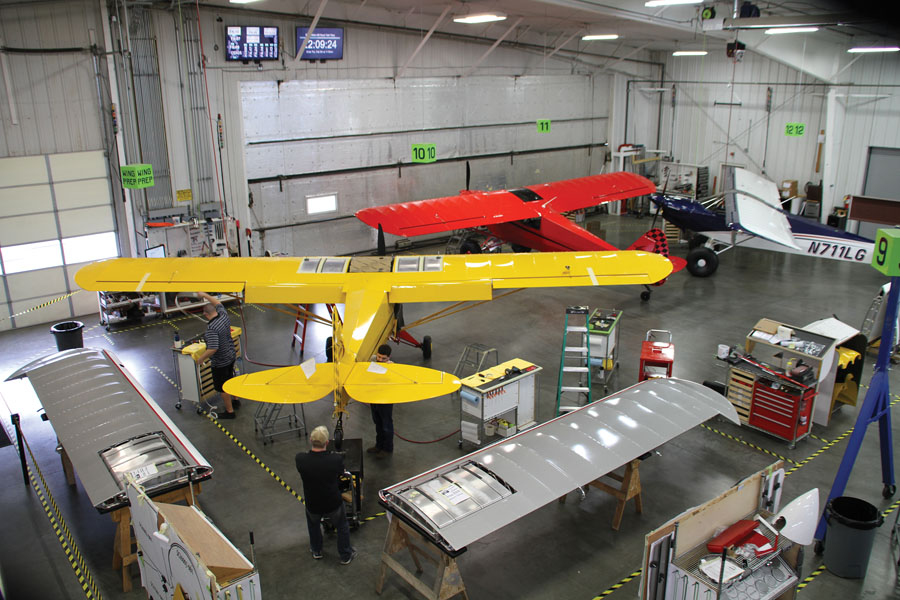
End of the (assembly) line. The CubCrafters factory floor ends with finished airplanes ready to poke their noses into the daylight.
Note on the NKET list that many of the tasks are fabrication, rather than assembly, and each line item is equally weighted. While other factory assist programs focus on assembly, CubCrafters’ program for the FX leans toward fabrication. This works because of the way the checklist is written. For instance, customers don’t have to make all of the wing ribs—they only have to make “a wing rib.” They do one, and the factory builds the rest.
CubCrafters aircraft consist of a huge number of vacuum-bagged, resin-infused parts. Although a builder doesn’t have to make them all, they do cut carbon fabric for layups, assist in vacuum bagging and infusing a certain set of parts, and clean flashing and other excess material off of parts to finish them. In short, they get a crash course in carbon part layup and fabrication while building parts for their airplane.
At the end of the week, the factory takes all of the parts built by the customer and puts them in a single staging area, ready for assembly into an aircraft. They add to that pile the parts that the factory fabricates, and when the time comes to start the customer’s airplane down the assembly line, they use that set of parts to build it.
When the aircraft reaches a critical final assembly point, the customer comes back and helps with that final assembly, earning more points on the NKET checklist. The finished plane is inspected by a local DAR, who Lervold says is no pushover. He quizzes the builder to make sure that they have an understanding of the major portions in which they participated. When the DAR is satisfied that the aircraft is amateur built—and in a condition for safe operation—he issues the airworthiness certificate.
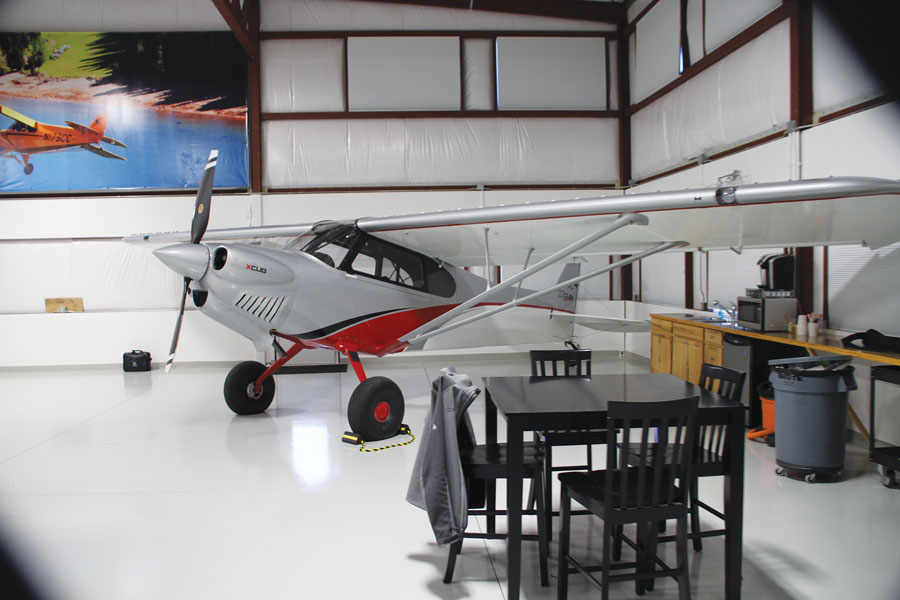
The CubCrafters delivery hangar is set up to allow FX builders to do final assembly tasks and take delivery of their finished aircraft.
The airplane then goes into Phase 1 flight testing, which the customer can fly, or it can be completed by the factory (for an extra fee).
Many homebuilders have raised an eyebrow over this type of homebuilding (see sidebar on page 10, “Amateur, Assisted, or Pro?”), but Lervold, a multiple-time homebuilder himself, has worked to make sure that the program meets the letter of the law. I asked him the obvious question, “Do you feel that a builder who has invested just a couple of weeks in the build is really qualified to hold the repairman certificate and do the annual condition inspection?”
Lervold’s response was interesting and honest: According to him, there has not yet been a builder who has gone through the program and requested a repairman’s certificate. They all understand the limitations of this kind of building.
In any case, Lervold said that if a builder does ask, CubCrafters’ policy is to discourage it. Most builders understand the advantage to having a second set of eyes look over the airplane on a regular basis anyway—even if they have the authority to do the inspection. It’s a good point to remember, even for traditional homebuilders.
If builders of FX aircraft aren’t asking the for the repairman certificate (one of the traditional reasons people build their own E/A-B aircraft), why do they choose to build? After all, an FX doesn’t really save money over buying one of CubCrafters’ certified aircraft. The answer is that the E/A-B category allows routine maintenance and modifications to be done by anyone—not just a licensed mechanic or repairman—and it also allow upgrades and modifications with experimental products, rather than ones that strictly meet TSOs. Experimental avionics are generally ahead of the certified aircraft fleet and cost significantly less (for more features), and having an E/A-B certificate allows upgrades from that segment of the market. It also allows condition inspections to be signed off by any A&P mechanic—not just one with an inspection authorization (IA). This is important in parts of the country where IAs are hard to find or schedule.
FX or EX—It’s a Great Plane
There is no doubt that CubCrafters has refined the original Cub platform significantly over the years. With reduced empty weight comes increased useful load, regardless of increased gross weight or not. The extra horsepower and constant-speed prop (allowing that horsepower to be used) in their latest model gives an airplane that not only handles well, but performs at the top of its class. It is a fun airplane to fly slow, a great airplane to fly faster, and it will haul a heck of a lot into a high-altitude destination, regardless of whether or not there is much runway.
There are many ways to build a Cub-alike airplane, from starting with plans, to using a basic kit with a welded fuselage and plans, to a few kits that are meeting today’s standard of “complete.” The EX-3 kit is probably as complete as anyone can imagine. We’re sure you’ll order a few things extra, but we can’t figure out what those things might be. CubCrafters has gone to great lengths to make sure you have everything you need. And if you decide to spend some time in Yakima to build your FX version, there is nothing you need to bring except your enthusiasm and your checkbook. CubCrafters even maintains a small fleet of courtesy cars for their resident customers—that’s how much they are thinking about the customer experience.
Either way, EX or FX, you’ll have a wonderful Cub when you are finished with the project, one that will fit naturally into the outback or slot itself into the pattern at any GA airport. “It flies like a Cub” is a compliment in and of itself—but in the case of the -3 model, it does much better than that.

